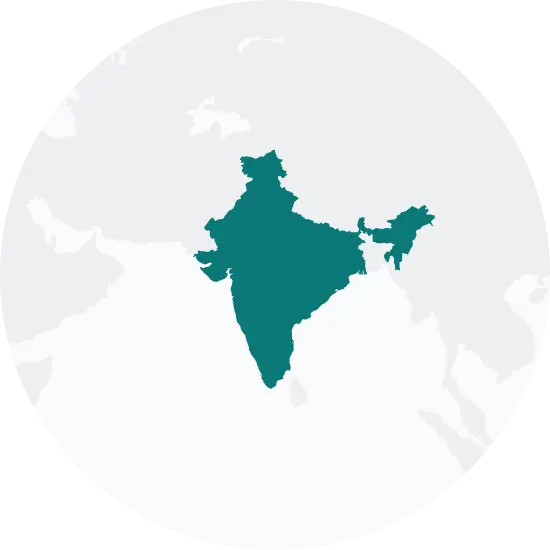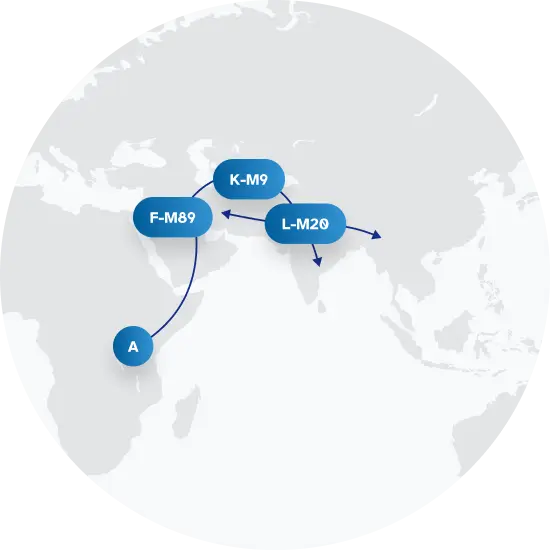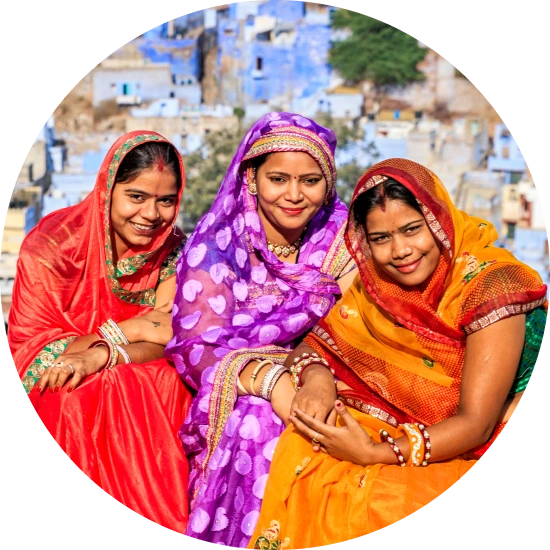Explore the Family Name Rao
How common is the last name Rao in the United States?
Based on the Decennial U.S. Census, the popularity of the surname Rao has seen a significant increase between 2000 and 2010. In the year 2000, Rao was ranked 3872nd in terms of popularity, but by 2010, it had jumped to the 3075th position, representing an upward change of over 20%. Additionally, the count of individuals bearing the Rao surname also grew from 8423 to 11672 during this decade, marking a rise of 38.57%. Consequently, the proportion per 100k people with the Rao surname rose from 3.12 to 3.96.
| 2000 | 2010 | Change | |
|---|---|---|---|
| Rank | #3,872 | #3,075 | 20.58% |
| Count | 8,423 | 11,672 | 38.57% |
| Proportion per 100k | 3.12 | 3.96 | 26.92% |
Race and Ethnicity of people with the last name Rao
Turning to ethnicity, the Decennial U.S. Census data shows that there was a marked shift in the ethnic identity associated with the Rao surname between 2000 and 2010. The percentage of individuals identifying as Asian/Pacific Islander increased from 72.22% to 78.55%, while the percentage of Whites dropped from 23.01% to 17.02%. Similarly, the proportion of individuals identifying as two or more races saw a decrease from 3.31% to 2.91%. Interestingly, the Hispanic population with the Rao surname saw a substantial growth of 41.56%, although they still only constitute a small fraction of the total. Lastly, those identifying as Black and American Indian and Alaskan Native both decreased, with the former dropping nearly half and the latter seeing a modest decline.
| 2000 | 2010 | Change | |
|---|---|---|---|
| Asian/Pacific Islander | 72.22% | 78.55% | 8.76% |
| White | 23.01% | 17.02% | -26.03% |
| Two or More Races | 3.31% | 2.91% | -12.08% |
| Hispanic | 0.77% | 1.09% | 41.56% |
| Black | 0.51% | 0.27% | -47.06% |
| American Indian and Alaskan Native | 0.18% | 0.16% | -11.11% |
Rao ancestry composition
23andMe computes an ancestry breakdown for each customer. People may have ancestry from just one population or they may have ancestry from several populations. The most commonly-observed ancestry found in people with the surname Rao is Southern Indian Subgroup, which comprises 40.5% of all ancestry found in people with the surname. The next two most common ancestries are Southern Indian & Sri Lankan (17.3%) and Chinese (9.2%). Additional ancestries include Northern Indian & Pakistani, British & Irish, Italian, French & German, and Bengali & Northeast Indian.
Ready to learn more about your ancestry? Get the most comprehensive ancestry breakdown on the market by taking our DNA test. Shop 23andMe
| ANCESTRY BREAKDOWN | COMPOSITION |
|---|---|
| Southern Indian Subgroup | 40.5% |
| Southern Indian & Sri Lankan | 17.3% |
| Chinese | 9.2% |
| Other | 33.0% |

Possible origins of the surname Rao
Your DNA provides clues about where your recent ancestors may have lived. Having many distant relatives in the same location suggests that you may all share common ancestry there. Locations with many distant relatives can also be places where people have migrated recently, such as large cities. If a large number of individuals who share your surname have distant relatives in a specific area, it could indicate a connection between your surname and that location, stemming from either recent ancestral ties or migration.
Based on 23andMe data, people with last name Rao have recent ancestry locations in India and the United Kingdom of Great Britain and Northern Ireland.
| RECENT ANCESTRY Location | Percentage |
|---|---|
| Karnataka, India | 36.90% |
| Tamil Nadu, India | 34.40% |
| Kerala, India | 32.50% |
| Andhra Pradesh, India | 31.50% |
| Maharashtra, India | 29.00% |
What Rao haplogroups can tell you
Haplogroups are genetic population groups that share a common ancestor on either your paternal or maternal line. These paternal and maternal haplogroups shed light on your genetic ancestry and help tell the story of your family.
The top paternal haplogroup of people with the surname Rao is L-M27, which is predominantly found among people with Central & South Asian ancestry. Haplogroup L-M27 is descended from haplogroup L-M20. Other common haplogroups include R-Z93 and J-L26, which are predominantly found among people with Central & South Asian and European ancestry. Other surnames with similar common haplogroups are: Ahmad, Khan, Hussain, Kumar, Nair, Ahmed, Desai, Reddy, Shah, Mehta.
The most common maternal haplogroups of people with Rao surname are: M, H, M30. These most commonly trace back to individuals of Central & South Asian and European ancestry.
 Paternal Haplogroup Origins L-M20
Paternal Haplogroup Origins L-M20
Your paternal lineage may be linked to many Lebanese people
Haplogroup L-M27 is represented in major religious populations within Lebanon, including both Lebanese Maronite and Muslim groups. It has been discovered that Lebanese Maronite populations are genetically distinct from Lebanese Muslim populations. This may mean that Lebanese Muslim groups are descendants of populations from the Arabian Peninsula who were involved in the Islamic expansion in the 7th century CE. On the other hand, Lebanese Maronite groups are likely descendants of western European populations involved in the Crusades during the 11th-13th centuries CE.
Your maternal lineage may be linked to the ancient people of the Indian subcontinent
While Haplogroup M is widespread throughout South and East Asia, it is more diverse on the Indian sub-continent than anywhere else in the world. The high degree of diversity of M in India is likely tied to its ancient arrival here nearly 50,000 years ago. In addition to M2, which is found throughout the subcontinent, there are dozens of haplogroups branching off of M that exist in India. These branches are often connected to specific regions, tribes, or ethnic groups. For example, haplogroup M18 is found among the Oraon peoples of eastern India and Bangladesh, while haplogroup M41 is common among the Pardhan speakers of eastern India, and haplogroup M31a can be found on the Andaman Islands, just off the southeast coast of India.

What do people with the surname Rao have in common?
Spoiler alert: it's complicated. People with the same last name are usually no more genetically similar than a randomly sampled group of people from the same population. That said, people with the same surname are more likely to have similar ancestries than randomly sampled individuals. The reason is the tendency of people with similar cultural or geographical backgrounds to preferentially mate with one another. That's why people who share a surname may be more likely to share traits and tendencies in common than people within the general population. Check out the percentages below to see the prevalences of tastes, habits, and traits of people with your surname compared with prevalences among 23andMe users.
Preferences
Traits
Habits
Wellness
Are health conditions linked to the last name Rao?
The short answer is that, if there is an association between surname and health, it's usually more about your ancestry than your name. Individuals with a given surname are no more genetically similar than the general population but often have similar ancestries. The populations of people associated with those shared ancestries often have sets of genetic variations, also known as alleles, in common. Some of those alleles are associated with a greater likelihood of developing certain diseases.
Disease variant frequency by ancestry
Disease allele frequencies in populations associated with the surname Rao are shown below. Important Note: not everyone with a disease allele will develop these health condition






















